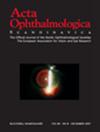Cryopreservation of corneal endothelial cells in vitro, ex vivo, and on a tissue engineered endothelial graft
Abstract
Aims/Purpose: In response to the global shortage of corneas, alternatives such as cell injection therapy and tissue-engineered endothelial keratoplasty (TEEK) have emerged, both relying on the mass production of primary cultured corneal endothelial cells (CECs). Cryopreservation of corneas (the primary cell culture source), cultured CECs (in vitro), and TEEK grafts (final products) is crucial to facilitate their industrialization and clinical application. While corneal cryopreservation has long been a challenge, advancements in cryoprotectants warrant a renewed investigation. This study aims to assess various cryopreservation methods for CECs n the three different states.
Methods: Ten cryopreservation media and varying cooling rates (-2°C/min, -1°C/min, or -0.5°C/min) were first tested on cultured CECs. After thawing, cell survival rates were assessed using Trypan blue staining and an automated cell counter. Subsequently, the best conditions identified for cultured CECs were applied to native CECs adhered to their Descemet's membrane and CECs on TEEKs. Post-thawing viability was assessed using triple labeling with Hoechst, Ethidium, and Calcein-AM (Pipparelli et al. IOVS 2011).
Results: A gradual cooling rate of -1°C per minute and the cryopreservation medium CryoStor CS10 provided the best conditions for in vitro CECs, ensuring an average viability of 91 ± 1% post-cryopreservation. However, applying the same conditions to native CECs on corneas or CECs on TEEK grafts resulted in a viability of less than 80%. Upon thawing, CECs tended to detach easily from the DM or bio-engineered grafts, leading to significant areas without cells.
Conclusions: Cryopreservation is effective for in vitro cultured CECs but remains very challenging for CECs attached to the DM or TEEKs. The next step will be to address cell attachment issues during cryopreservation.
- Aurélien Pipparelli, Gilles Thuret, David Toubeau, Zhiguo He, Simone Piselli, Sabine Lefèvre, Philippe Gain, Marc Muraine; Pan-Corneal Endothelial Viability Assessment: Application to Endothelial Grafts Predissected by Eye Banks. Invest. Ophthalmol. Vis. Sci. 2011;52(8):6018-6025. https://doi.org/10.1167/iovs.10-6641.

 求助内容:
求助内容: 应助结果提醒方式:
应助结果提醒方式:


